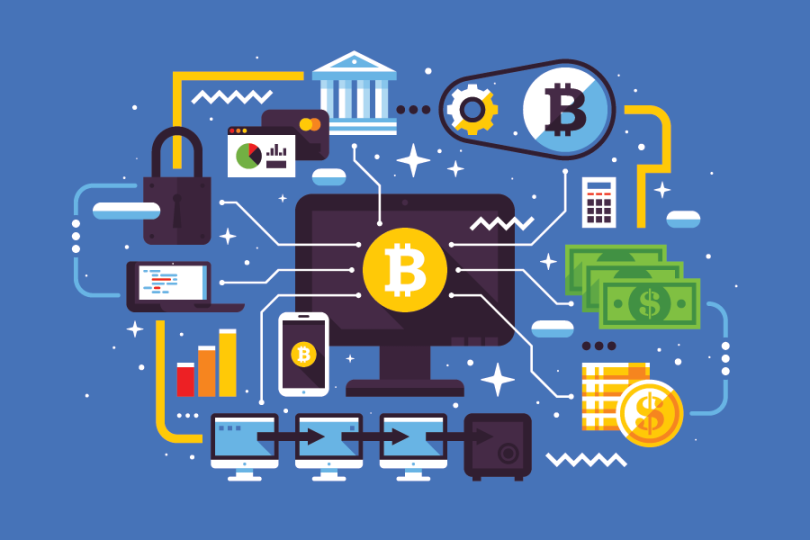How Blockchain Works in Real Life: A Practical Guide
In recent years, blockchain technology has garnered a lot of attention, but for many, it’s still a concept that’s shrouded in mystery. This guide will demystify blockchain by explaining how it works in real life and how it impacts various industries. By the end, you’ll have a clear understanding of blockchain’s practical applications and why it’s considered revolutionary.
What is Blockchain?
At its core, blockchain is a decentralized digital ledger that records transactions across multiple computers. This ensures that the record cannot be altered retroactively without the alteration of all subsequent blocks and the consensus of the network. Think of it as a highly secure and transparent digital ledger that’s shared across a network of computers.
Key Components of Blockchain
Blocks
These are digital pieces of information. Each block contains three main elements:
Data
Information about the transactions.
Hash
A unique identifier for each block.
Hash of Previous Block
This links the blocks together in a chain.
Nodes
These are the computers that participate in the blockchain network. Each node has a copy of the entire blockchain and helps to maintain its integrity.
Consensus Mechanism
This is a process used by the network to agree on the validity of transactions. Common mechanisms include Proof of Work (PoW) and Proof of Stake (PoS).
How Blockchain Works in Real Life
Cryptocurrencies
The most well-known application of blockchain is in cryptocurrencies like Bitcoin and Ethereum. Here’s how it works:
Transaction
When you send Bitcoin to someone, the transaction is broadcasted to the network.
Validation
Miners (nodes) validate the transaction using the consensus mechanism.
Inclusion in Block
Once validated, the transaction is included in a new block.
Added to Chain
This block is then added to the blockchain, making the transaction permanent and transparent.
Supply Chain Management
Blockchain can enhance the transparency and efficiency of supply chains. For example:
Tracking
Each product can be tagged with a unique identifier that’s recorded on the blockchain.
Visibility
As the product moves through the supply chain, each transaction is recorded, providing a transparent history from origin to destination.
Authentication
This ensures the authenticity of products, reducing the risk of counterfeiting.
Healthcare
In healthcare, blockchain can improve data security and patient privacy:
Secure Records
Patient records can be securely stored on the blockchain, accessible only to authorized parties.
Interoperability
Blockchain can ensure that patient data is easily and securely shared across different healthcare providers.
Tracking Medications
Blockchain can track the production and distribution of medications, reducing the risk of counterfeit drugs.
Voting Systems
Blockchain can revolutionize voting systems by providing a secure and transparent method of casting and counting votes:
Tamper-Proof
Votes recorded on the blockchain cannot be altered, ensuring the integrity of the election.
Transparency
All transactions (votes) are transparent and can be audited by anyone, increasing trust in the electoral process.
Real Estate
Blockchain can simplify and secure real estate transactions:
Smart Contracts
These are self-executing contracts with the terms directly written into code. They can automate and enforce the terms of a real estate deal.
Title Deeds
Property titles can be recorded on the blockchain, making them easily verifiable and reducing the risk of fraud.
The Future of Blockchain
Blockchain technology is still evolving, and its full potential is yet to be realized. However, its current applications already demonstrate its power to transform industries by enhancing security, transparency, and efficiency. As more businesses and sectors adopt blockchain, we can expect even more innovative uses to emerge.
Conclusion
Blockchain is much more than just the technology behind Bitcoin. Its ability to provide a secure, transparent, and decentralized way to record and share information has far-reaching implications for many industries. By understanding how blockchain works in real life, we can better appreciate its potential to revolutionize the way we conduct transactions and manage data. Whether it’s improving supply chain transparency, securing healthcare records, or enabling tamper-proof voting, blockchain is poised to make a significant impact on our world.
For more insights into blockchain and its applications, stay tuned to our blog. If you have any questions or want to share how blockchain has impacted your life, drop a comment below!

